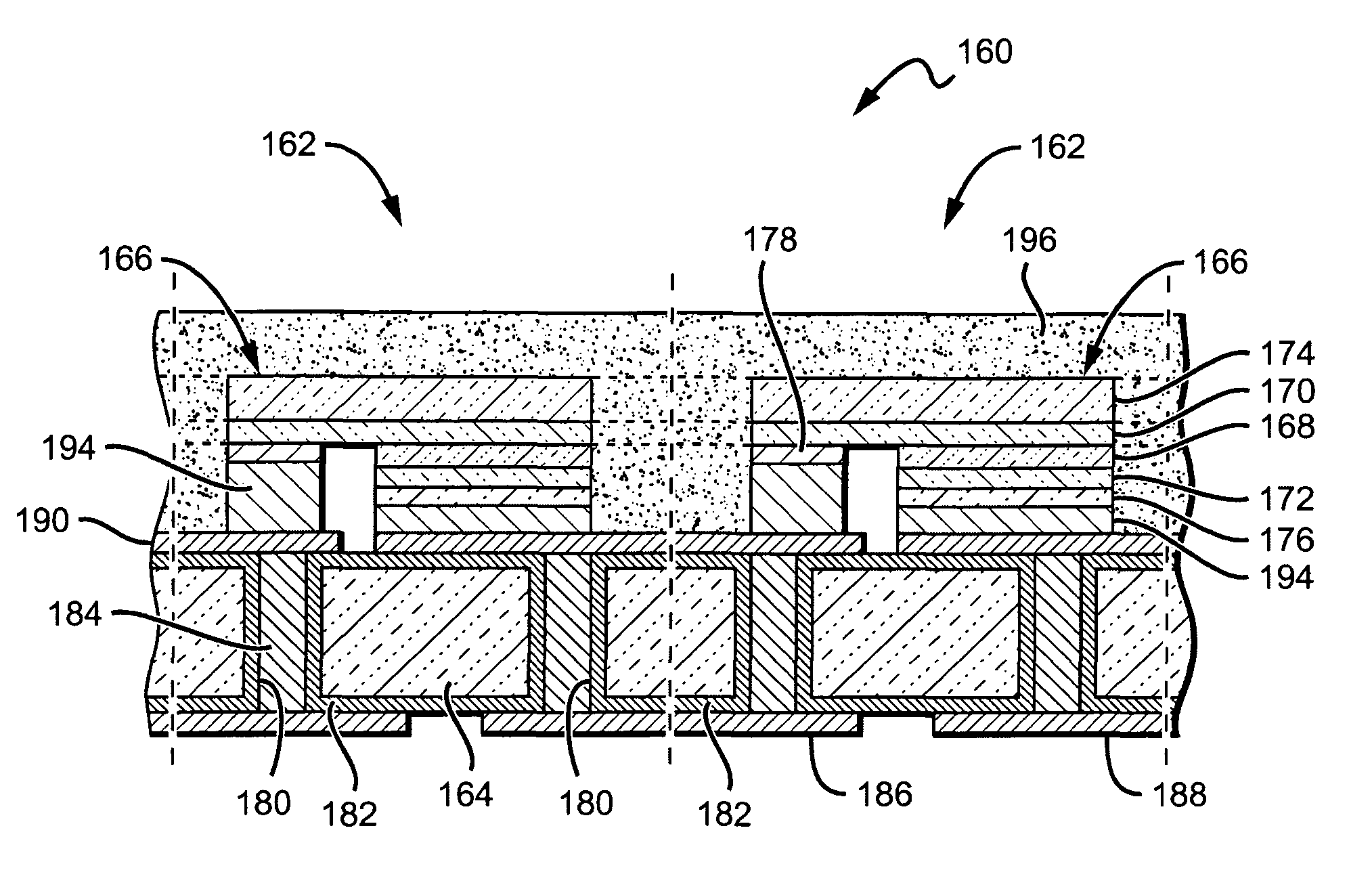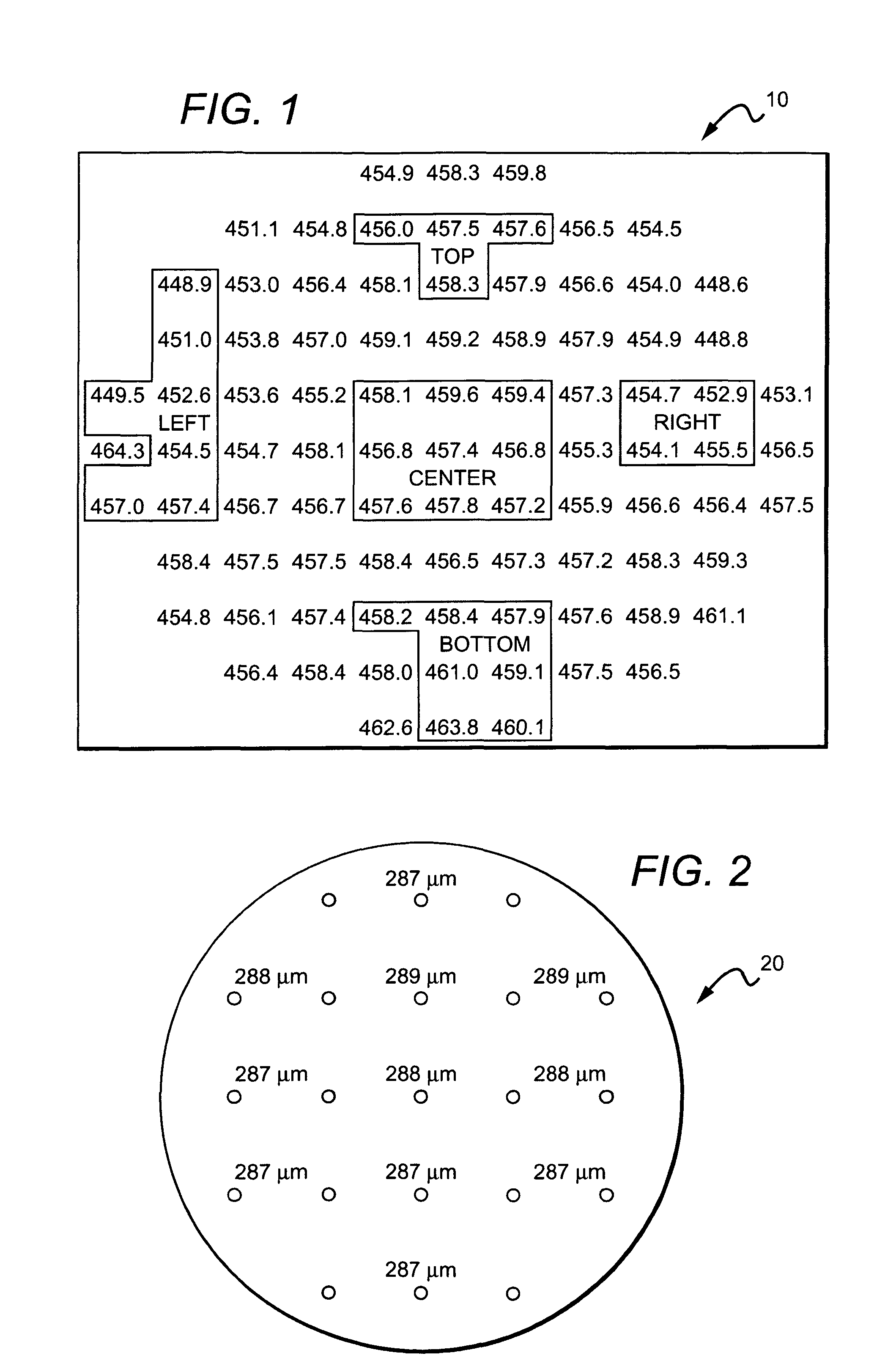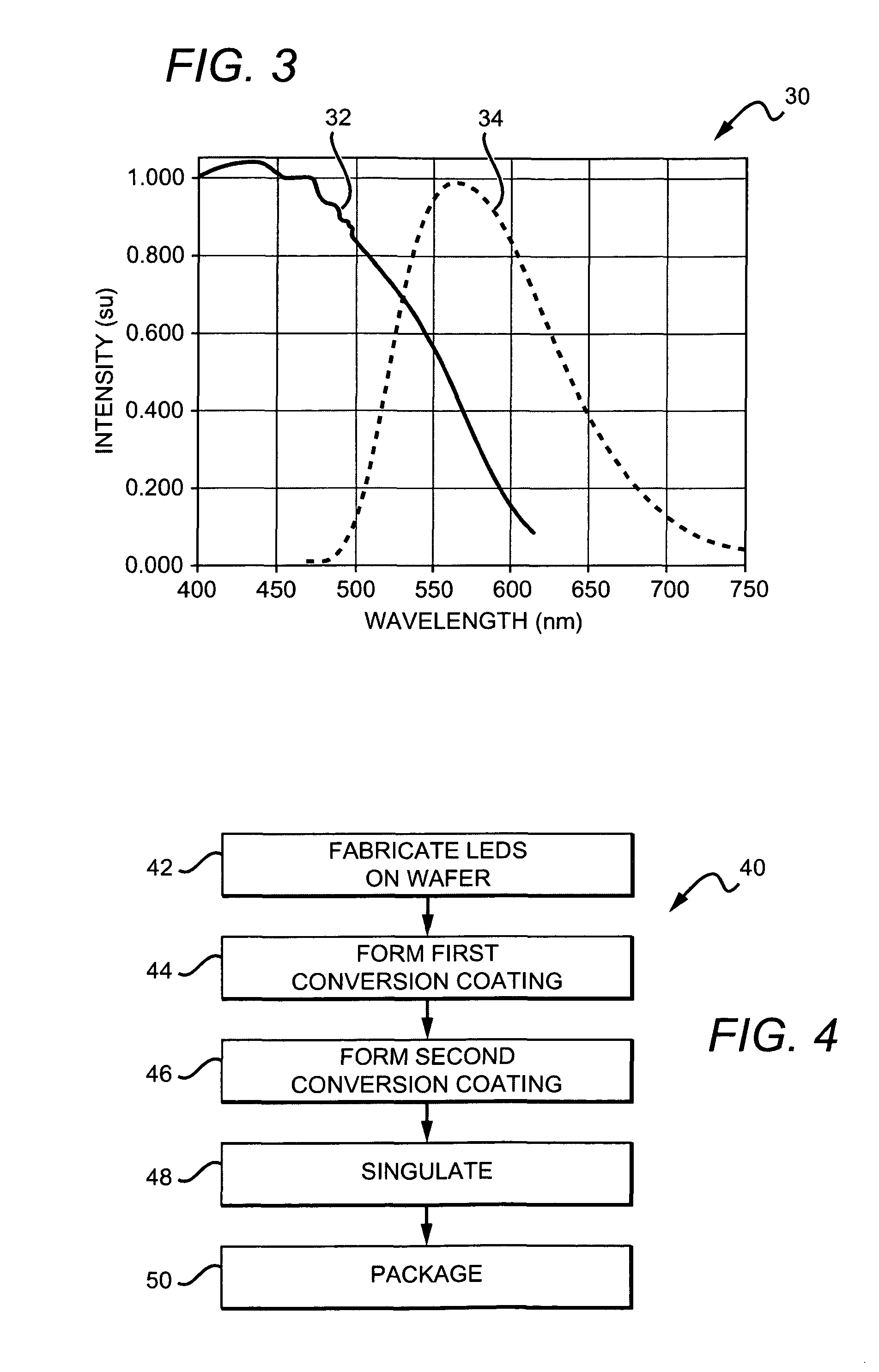Wafer level phosphor coating technique for warm light emitting diodes
a light-emitting diode and phosphor coating technology, applied in the direction of semiconductor devices, semiconductor/solid-state device details, electrical devices, etc., can solve the problems of non-uniform color temperature led, difficult to control and the difficulty of stenciling the geometry and thickness of the phosphor layer
- Summary
- Abstract
- Description
- Claims
- Application Information
AI Technical Summary
Benefits of technology
Problems solved by technology
Method used
Image
Examples
Embodiment Construction
[0045]The present invention discloses new methods for fabricating semiconductor devices such as LED chips, with one embodiment of a fabrication method according to the present invention providing LED chip fabrication at the wafer level. The present invention also discloses LED chips and LED packages fabricated using the methods. Different embodiments of the present invention disclose sequential coating methods that provide two or more coatings or layers of conversion material over LEDs. In one embodiment this can be done at the wafer level. The methods according to the present invention are particularly applicable to fabricating LED chips that emit a warm white light, which typically requires covering LEDs with two or more phosphors such as yellow and red phosphors. As described above, the presence of the two phosphors in the same layer can result in re-absorption losses due to a portion of the emission spectra from one of the phosphors overlapping with the excitation spectrum of on...
PUM
 Login to View More
Login to View More Abstract
Description
Claims
Application Information
 Login to View More
Login to View More - R&D
- Intellectual Property
- Life Sciences
- Materials
- Tech Scout
- Unparalleled Data Quality
- Higher Quality Content
- 60% Fewer Hallucinations
Browse by: Latest US Patents, China's latest patents, Technical Efficacy Thesaurus, Application Domain, Technology Topic, Popular Technical Reports.
© 2025 PatSnap. All rights reserved.Legal|Privacy policy|Modern Slavery Act Transparency Statement|Sitemap|About US| Contact US: help@patsnap.com



